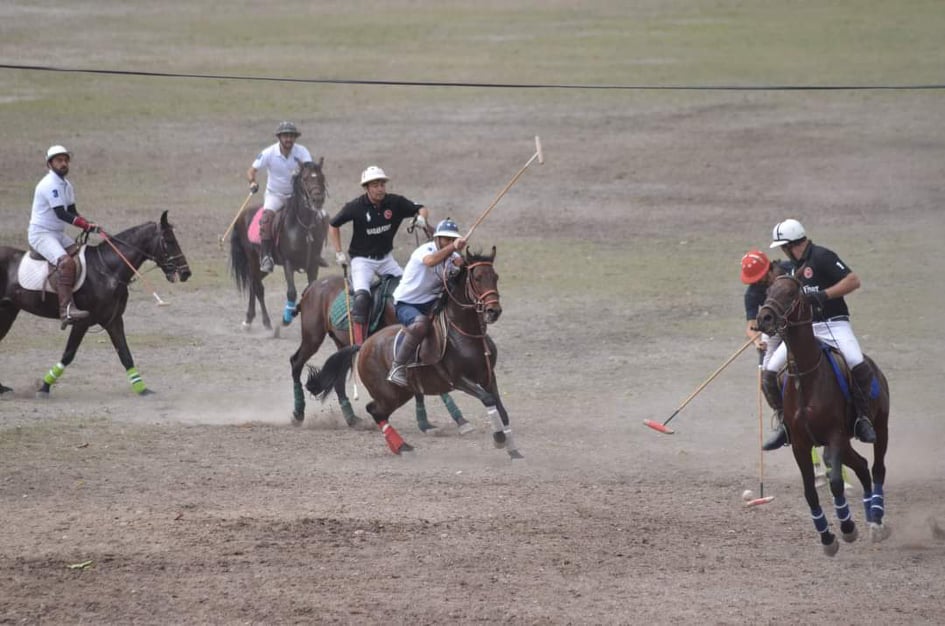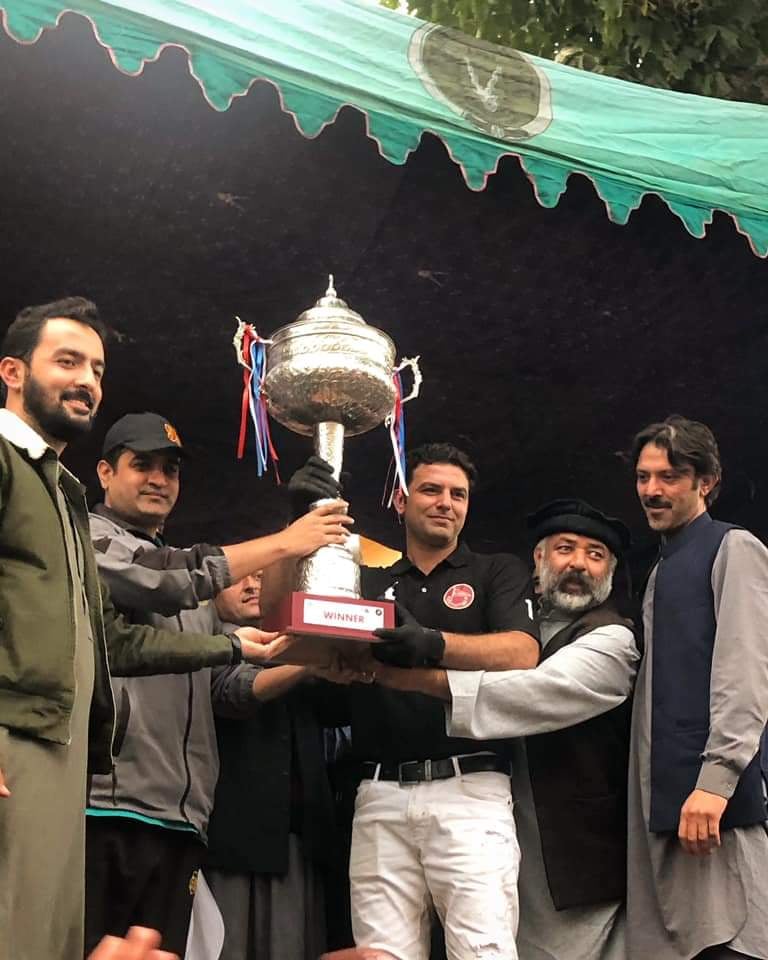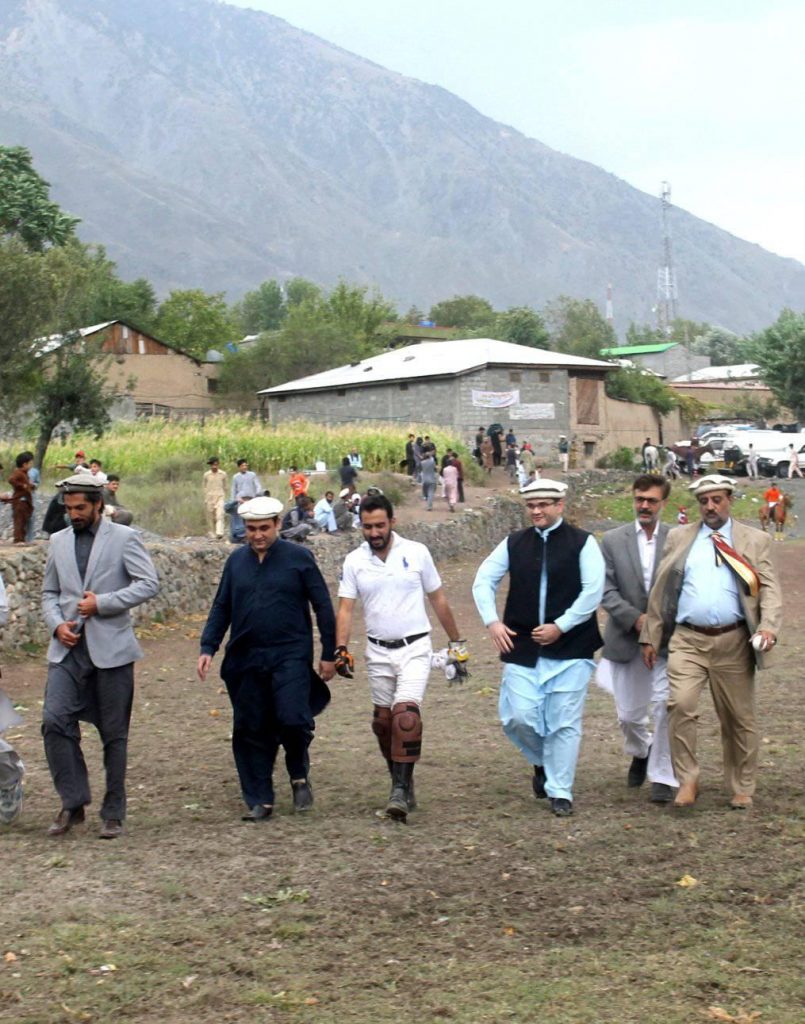The aim of this magazine is to connect the communities of Hindu Kush, Himalaya, Karakorum and Pamir by providing them a common accessible platform for production and dissemination of knowledge.
The Revival of Polo in Drosh, Chitral
Drosh is the second largest urban settlement in Chitral and is the southernmost outpost of the Khowar language and the traditional Kho culture. South of Drosh Khowar ceases to be spoken and is replaced by other Dardic Indo-Aryan languages including Palula, Dameli and Gojri often with Pashto serving as the language for interethnic communication. In the bustling bazar of Drosh you will hear all of these languages alongside Khowar and the looks and mannerisms of the people are quite different from those of other parts of Chitral. It is here in the most non-Chitrali tehsil of Chitral that a few young men got together and revived a very Chitrali custom some years ago, the sport of polo.

Polo has been a part of Chitrali culture for as long the Chitrali identity has existed. When or how it began to be played is not certain. The Non-Kho inhabitants of Chitral, including the Kalash, do not have a tradition of playing this sport so one can assume that it was introduced from the North, most probably during the brief occupation of the region by the Chagatai Khanate or perhaps during the rule of the subsequent Raees Dynasty. By the time the Katoor Dynasty took power it was already an integral part of Chitrali culture and the Tareekh-e-Chitral of Mirza Ghufran mentions polo matches and the customs and etiquettes associated with the game during the late Raees and early Katoor periods. Historically the Katoors always placed a great emphasis on Drosh. During the rule of several of the early Katoor Shahs it was Drosh that served as their capital, not Chitral. This love for the southern part of Chitral is unprecedented as earlier dynasties always preferred to rule from either Chitral Town or the Mulkho Valley, with Drosh having a lesser status as it was a Kalash majority region until the 1700s. During the reign of Aman-ul-Mulk Drosh had a very important status as Aman-ul-Mulk’s mother was a daughter of the Riza Hakim of Drosh. It is in this era, the mid to late 1800s, that the first written records of polo being played in Drosh are found.
Following the events of 1895 after which Chitral came under the protection of British India, Drosh gained even more importance. For the defense of Chitral the British decided to have a garrison in the territory of Chitral State and given its proximity to the Lowari Pass, the direct line of communication to the rest of the empire and the Kunar province of Afghanistan, Drosh was chosen as the site of this garrison. The Mehtar also preferred this arrangement as it meant he would have some distance between his court in Chitral Town and the nosey British Officers! During the Chitral Sate era polo reached unprecedented popularity as the stability offered by the Pax Britannica meant that the local nobility had more time to pursue recreation, of which polo was a key aspect. Whereas in other parts of the state it was the local Laals, Hakims and Mehtarjaos who patronized the sport and also provided the bulk of the players, in Drosh the British and Indian officers also contributed to its popularity.
After independence, polo started to stagnate in Drosh. As the end of the state and the land reforms of the 1970s emasculated the feudal aristocracy fewer and fewer locals played the sport and it was largely the officers of the Chitral Scouts, the headquarters of which was in Drosh until 1992 when it was shifted to Chitral Town, that kept the sport alive. The last time the yearly polo tournament took place in Drosh was during that year.

For twenty-seven years polo was forgotten in Drosh. The popularity of the sport actually grew in other parts of Chitral as the Shandur Polo Tournament with Gilgit on the Shandur Pass became an important part of the social calendar and a huge tourist attraction but in Drosh, with its largely non-Kho population, Polo was forgotten. This changed in the mid-2010s. Hasham-ul-Mulk, who had just qualified as an engineer in China, had to return to Drosh following the tragic and untimely demise of his father. Hasham is the great grandson of Shahzada Hissam-ul-Mulk the last Governor of Drosh from the days of Chitral State and from his mother’s side the grandson of the longtime political strongman of Chitral, Shahzada Mohiuddin. Hasham saw that there was a need to revive Kho traditions in Drosh and the best way to do that would be by reviving the sport of polo.
The first thing he had to do was secure the Polo ground or Junali in Khowar. Every major population center in Chitral used to have a Junali. In towns such as Drosh, where polo had ceased to be played these large grounds have often been subjected to encroachment and in places with less government influence, often divided up and used for agricultural or commercial purposes. In Drosh the polo ground was still intact and Hasham saw that he would need to involve some kind of officialdom in his project to ensure its success. Thus he formed a close friendship with a Major of the Chitral Scouts, who happened to be an accomplished equestrian. Together they started off by playing one on one stick and ball polo and slowly they gained an audience as the people of Drosh were fascinated by the spectacle of this sport, which many of the younger generation had never witnessed before. This gave birth to the Drosh Polo Association and subsequently many people in Drosh purchased horses and started to play polo. An important measure was that the Drosh Polo Association encouraged anyone to play regardless of caste, ethnicity or socio-economic status, thus disassociating itself from the feudal and elitist past. Another of my relatives who was instrumental in the revival of polo in the region is Ghaziuddin of Naghar, a village located south of Drosh known for his family home, the imposing Naghar (often transliterated as Nagar in English) Fort. Ghazi and his brothers started to play polo around the same time as Hasham and formed what would become the strongest team in Drosh, Nagar Fort.
Thus the groundwork was laid and polo was formally revived in 2019 with the first polo tournament held after twenty-seven years. This tournament was won by the Nagar Fort Team. This brings us to the current day, and the second Drosh Polo tournament which was held in early October 2020.

I had contacted Hasham about writing something about the revival of polo in Drosh earlier in the year and he told me that they were going to hold a polo tournament in October. A few days before the tournament he came to Chitral to invite me to attend. Given that I had quite a busy schedule that week I told him that I would be unable to make it for the opening day or the final but I would definitely make it to at least one match, preferably one in which he was playing.
On the second day of the tournament I was able to make it to Drosh. My cousin Nawabzada Hissam of Shergarh who was visiting me at the time also accompanied me. We turned up unannounced during a break in the bout and was received by Hasham, all kitted up as he was about to play in the next match. The welcoming committee also included Faisal, the brother of Ghaziuddin of Naghar and a local PTI leader and the Polo Coach, Aftab Alam, who is a renowned sitar player and the son of Subadar Mahboob Alam the former polo coach of the Chitral team. So in strong winds and a steady drizzle we walked over to the seating area. Several teams were playing that day and the format of play was that the losing side would be eliminated and the winners would play in the semifinals. Chitrali polo is played in two sessions with a break in between, as opposed to modern standardized polo which consists of four fifteen minute chukkers with a break between each chukker, making freestyle Chitrali polo fast and wild. The most anticipated game of the day was that between Hasham’s team and Nagar Fort. The first round of play went fairly equally balanced but after the break Nagar fought harder and won by four goals. Hasham stood eliminated and Nagar celebrated their victory with a small ishtok, or Khowar dance to the accompaniment of traditional band music, before the rest of the day’s play resumed.
This brings us to an interesting aspect of polo in Chitral and Gilgit-Baltistan. Polo matches are always accompanied by traditional music. The Ustads play tunes on the surnai accompanied by kettle drums and rouse up both the players and the spectators alike. Traditionally prominent players would have certain tunes that would be played for them, especially while attempting the thampuq, which is when a player who has just scored a goal picks up the ball in the same hand with which he is holding his stick and then gallops down the ground before throwing the ball in the air and then striking it in an effort to make another goal. The Ustads are then key to the subsequent ishtok that takes place to celebrate a victory with the winning team dancing in jubilation.
Over the next few days Nagar Fort continued their winning streak and once again won the Drosh Polo Tournament, giving them two consecutive wins. Their victory was celebrated with much merry making in Nagar Fort with all of the prominent ustads of Chitral going down to Naghar to play their music. Despite his loss Hasham-ul-Mulk will be remembered as the man who reintroduced polo to Drosh.
The story of the revival of polo in Drosh is the story of ancient traditions being maintained in the modern world. Polo is a core element of the Chitrali identity and its loss in that region would have meant an end to that key aspect of Chitrali culture. Making the sport accessible to the masses was a key element of this revival, as the feudal air of this sport had to be toned down for a more commercial and egalitarian world. Overall the reintroduction of polo to Drosh has in a way cemented the region to the Kho culture of Chitral.



